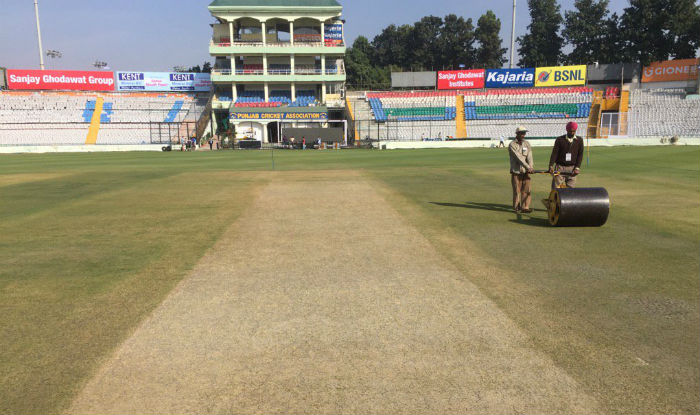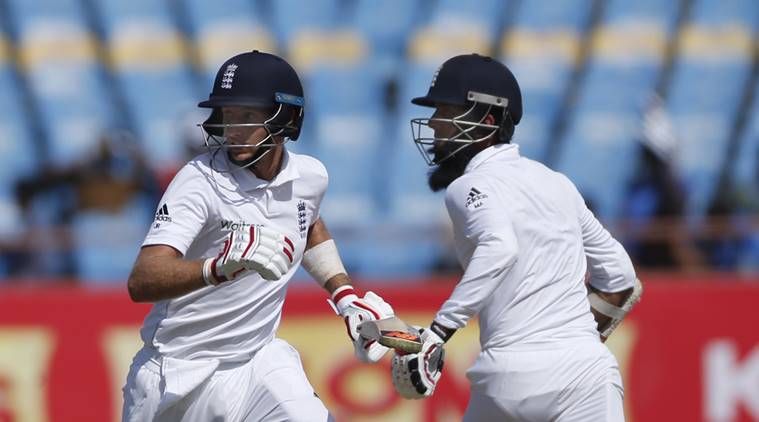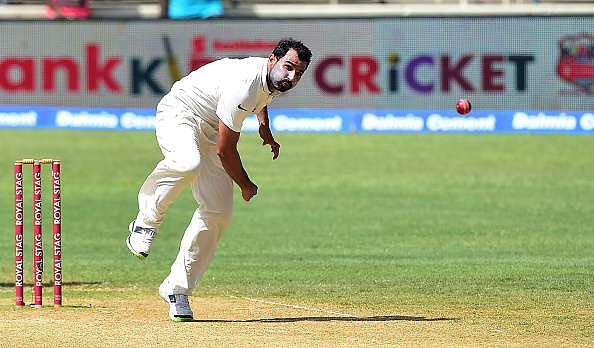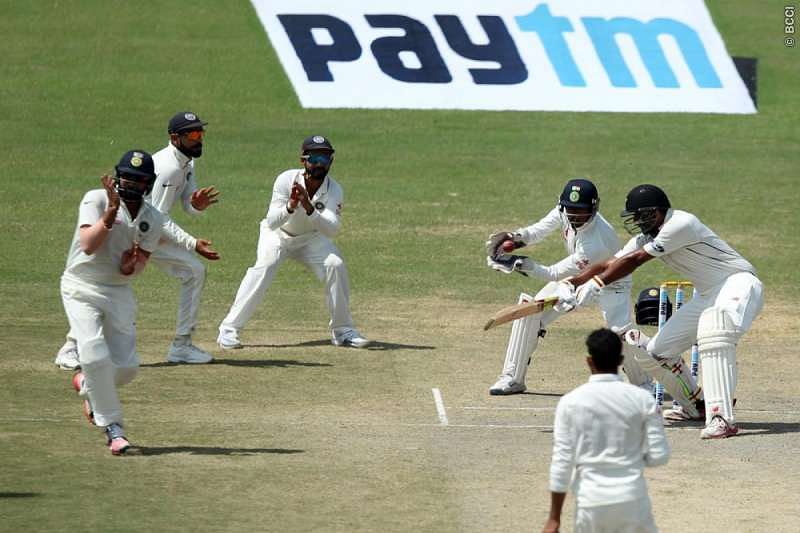
Time already to appreciate the pitch-curators for the India-England series
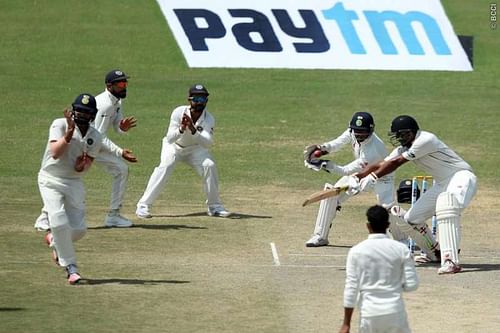
It is a tough job being a pitch curator. Tougher still, if it is in India. More than a billion fans will bay for your blood if you prepare a pitch that aids fast bowlers more than spinners or is even remotely green.
Indians hate green tops because a majority of the countrymen think Indian batsmen cannot play on green tops or bouncy wickets. That is no more than an old wives’ tale. The present stars of Indian batting – Virat Kohli, Cheteshwar Pujara, Ajinkya Rahane, Rohit Sharma and Murali Vijay are all players who prefer the faster ball and can deftly handle bounce, swing and seam movement, if not expertly, as well as any overseas batting stalwart.
Gone are the days when Indians used to collapse in a heap when the ball would do anything off the surface. The bigger point to remember is that Indians, like MS Dhoni once pointed out, become a more potent team on green tops as it aids their seam bowlers.
Batsmen around the world have trouble these days with swing and seam and turn – basically anything out of the ordinary - thanks to impatience and lack of technique, a flaw aided and abetted by too much T20 cricket. As such, there is no real reason why India, at home, should prepare rank turners to win matches like they did against South Africa earlier.
Also read: Has the pitch at Rajkot done India more harm than good?
It is a lose-lose situation for the Indians. If they win, as they did against South Africa, no one really gives them credit for it. If they lose, as they did against England in 2012 on turning tracks, they become objects of abject ridicule. Home team advantage is a concept that many feel adds to the viciousness of Test cricket, but a good game can be played only when the odds are not stacked heavily against one team.
Pitch curators are constantly harangued by insecure captains and coaches. Considering all of this, the pitch curators for the India-England Test series have done an excellent job preparing pitches that are sporting and not extremely spin-friendly. Here are some characteristics of a good pitch, that curators should always pay attention to:
- #1 Good contest between bat and ball – pitches should be such that a good bowler should find help if he has the skill and a good batsman should be able to score runs if he can keep the good balls out.
- #2 Good balance between assistance for seam bowling and spin bowling.
- #3 Good for batting on the first two to three days with some help for pacers on Day 1 and turn for spinners on Day 4 and Day 5.
- #4 Shouldn’t be too dry as that leads to a lot of reverse swing, and crumbling that leads to early turn.
- #5 Shouldn’t be too moist as that could lead to uneven surfaces and excessive seam movement early on.
- We look at five reasons why the curators of the pitches at Rajkot and Vizag, both hosting their inaugural games, and at Mohali, must be given a pat on their back. They weren’t really the best pitches in the world and at times, there was invariable and inconsistent bounce but considering the sub-continental conditions and the tracks prepared in the past, these were genuinely sportive and good for the game, thus giving us three closely contested games, where the team leading the series is the team that actually lost 2 out of the 3 tosses.
- Mind you, not everything is under the control of the curators as weather plays a huge role and pitches get lower and slower when baked in the summer heat in India.
Good batting surfaces
All the three pitches, at Rajkot, Vizag and Mohali have been good batting pitches, where at least one team has managed to score more than 400 runs in an innings. At Rajkot, England and India managed 537 and 488 runs respectively. At Vizag, India managed to score 455 in their first innings and at Mohali, India batting second scored 417.
As much as teams need to pick 20 wickets to win a Test in most cases, no one likes a Test that has been completed in 3 days. That is what happens on green tops and rank turners where batsmen rarely survive.
While all three pitches assisted bowlers in producing unplayable deliveries that have bounced awkwardly, especially in Vizag, overall, batsmen have been able to score runs if they showed the patience. A good case is made by the number of runs the Indian lower order has scored. There were 6 centuries in Rajkot, 2 centuries in Vizag and couple of close misses at Mohali showing that batsmen who were willing to grind and guts it out could score runs.
The icing on the cake was the way Parthiv Patel played on a fourth-day track in the third Test at Mohali.
Balance between pacers and spinners
At Rajkot, Indian pacers and spinners picked up 4 and 9 wickets respectively. At Vizag, the pacers and spinners picked up 4 and 15 wickets respectively. At Mohali, pacers and spinners picked up 7 and 12 wickets respectively.
On sub-continental pitches, where India played two pacers and 3 spinners, and where the spinners bowled a lot more than the pacers, these are good ratios, way better than the ratios for pacers-spinners and the number of wickets spinners manage to pick in countries like Australia, South Africa and England.
Even in the case of England, the pacers have picked up 19 wickets compared to the 27 that their spinners picked in all three Tests together. Is it really possible for Indian spinners to pick as many on pitches in England, Australia, South Africa or New Zealand?
Help for all types of bowlers
Rajkot, Vizag and Mohali have all kept the bowlers interested. Shami bounced out some of the English batsmen in the second innings of the third Test. Vijay has fallen frequently for the short delivery. There was reverse swing available for all the fast bowlers to keep them more than interested once the ball was old. Spinners got turn, but not outrageous turn.
Bowlers like Ashwin and Jadeja had to work batsmen out and wear them out. Ashwin showed his guile and proved that he could pick wickets even on surfaces where the ball doesn’t turn much, thanks to his drift, loop and the ability to outthink and outfox the batsmen.
Ben Stokes, a fast bowler, picked up a 5-wicket haul in the third Test and James Anderson coming back from injury, picked up figures of 3/62 in the first innings of the second Test proving that good bowlers could succeed on these pitches.
Not perfect but more or less consistent
Haseeb Hameed got a couple of unplayable deliveries, when the ball bounced a lot more than expected and so did some of the other batsmen like Jonny Bairstow, when the ball didn’t bounce as much as they expected.
But, even in Alastair Cook’s own words, the pitches haven’t misbehaved a lot or as much as everyone feared. The pitches rewarded batsmen who could focus for long periods of time.
On rank turners prepared for the South Africa series, there was no batsman who could claim he would survive as the ball that misbehaved from the surface was never too far away. That has not been the case in this series so far. There has been enough bounce on almost all the pitches for fast bowlers to actually pepper the batsmen with short-pitched bowling,
Shami picked up two lower-order wickets in England’s second innings in the third Test at Mohali. Pujara was hit multiple times on the helmet by Chris Woakes in Vizag. At the same time, there have been hardly any balls that have spun outrageously or alarmingly. Both Adil Rashid and Ravichandran Ashwin have been successful more because of their variety and the ability to execute their plans than because of the pitches.
Reasonably impressive averages with bat and ball
A good pitch offers a good contest between bat and ball. Neither should the batsmen’s averages be too inflated nor should the bowlers’ averages be too low. A look at the stats demonstrates that for us.
7 different batsmen have scored centuries and more than a dozen batsmen have managed half-centuries. Virat Kohli leads the run charts with 405 runs at an average of 101.25 but there are 8 batsmen who have already scored over 200 runs, all of whom have an average over 40.
At the same time, Adil Rashid, Ashwin, Jadeja and Shami have 10 or more wickets with Rashid’s average the lowest – 28.66. Jayant Yadav boasts of the lowest average in the series overall - 8 wickets at 17.25 but he has rarely been assisted by outrageous turn. Most of his wickets were a result of pressure created by tight bowling and immaculate line and length.
